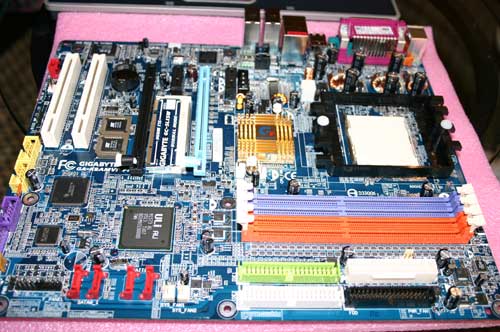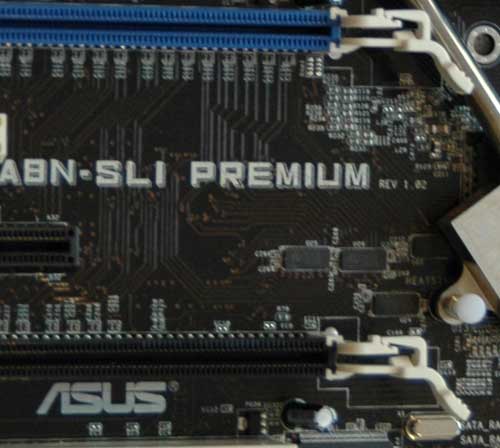ATI's Multi-GPU Solution: CrossFire
by Anand Lal Shimpi & Derek Wilson on May 30, 2005 9:00 PM EST- Posted in
- GPUs
What Happened to the Selector Card?
One of ATI's most interesting claims with their CrossFire solution is that you no longer need the selector card that is seen on nForce4 SLI motherboards. How is it that ATI is able to get around this requirement? Contrary to popular belief, it's not magic.By default, the nForce4 SLI chipset sends all 16 PCI Express lanes from the North Bridge to the first PCI Express x16 slot on a nForce4 SLI motherboard.
Flipping the selector card the other way divides the PCI Express lanes and sends the first 8 lanes to the first slot and the remaining 8 lanes to the second slot.
ATI's MVP chipset works slightly differently; by default, the North Bridge sends 8 PCI Express lanes to each of the two PCI Express slots. If you have two cards installed, then this is the desired configuration. However, if you only have one card installed, in order to get a full PCI Express x16 slot, one of the following methods must be implemented by the motherboard manufacturer:
Option 1 - Terminator Card
The first option is a terminator card that is installed into the second PCI Express x16 slot. This card simply reroutes the 8 PCI Express lanes going into the slot back to the first PCI Express slot, giving it all 16 PCI Express lanes.

Obviously, the downside to this approach is that you have to use a terminator card; we haven't heard of many manufacturers doing this.
Option 2 - SLI Selector Card
The second option is to implement the same selector card that is used in nForce4 SLI motherboards. If you want a single x16 slot, flip the card one way. If you want two x8 slots, just change its orientation and you are good to go.

The obvious downside here is that the user has to play with the selector card, something that ATI wants to avoid. Despite ATI's desire to avoid this card, some manufacturers are implementing it:

Option 3 - Selector ICs
The third (and most expensive) option is for the motherboard manufacturer to place a series of selector ICs (Integrated Circuits) on the motherboard itself, which will allow for the user to switch between one x16 slot or two x8 slots from within the BIOS. This is the most desired implementation from the end user's standpoint, but it is the most expensive option.
Either 4 or 5 chips have to be placed on the motherboard in order to allow for this software-selection of PCI Express configuration. Each chip costs the motherboard manufacturer approximately $1, which isn't really a problem for high end motherboards.

Note that there is also no reason why the same technology can't be implemented on nForce4 SLI motherboards; in fact, ASUS has already implemented it on their latest nForce4 SLI solution:











57 Comments
View All Comments
bob661 - Monday, May 30, 2005 - link
#5Try it and let us know.
ksherman - Monday, May 30, 2005 - link
so... does this man I can use the CrossFire tech on my DFI nF4 Ultra-D? since the limiting factor in making it SLi worthy was the SLi bridge, ATI's doesnt need one... and is it fully compatible with nForce4?Zebo - Monday, May 30, 2005 - link
Like a dongle is a big deal with the 95 cables already hangin out the back of my case...Slappy00 - Monday, May 30, 2005 - link
What ever happened to the Wicked Stepsister?looks good but with next gen consoles around the corner I think im gonna put my money towards a AMD 64X2 and a PS3/XBOX 360 rather than shelling out a grand for some extra frames.
AnnihilatorX - Monday, May 30, 2005 - link
"First" Second Postmattsaccount - Monday, May 30, 2005 - link
Bout time ATI gave us something.error4656 - Saturday, December 5, 2020 - link
this shit is old